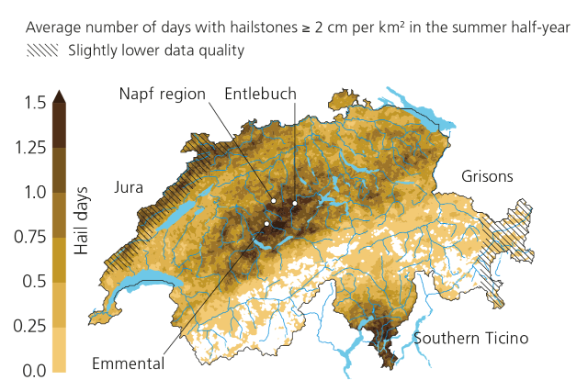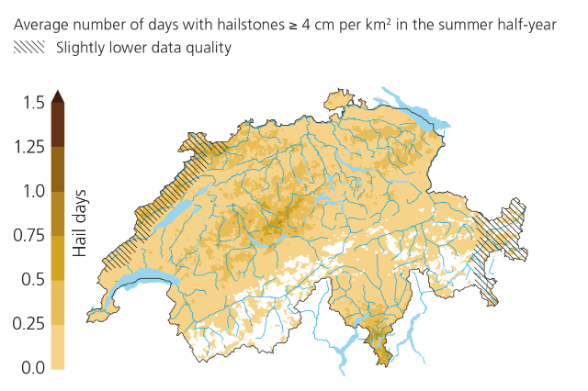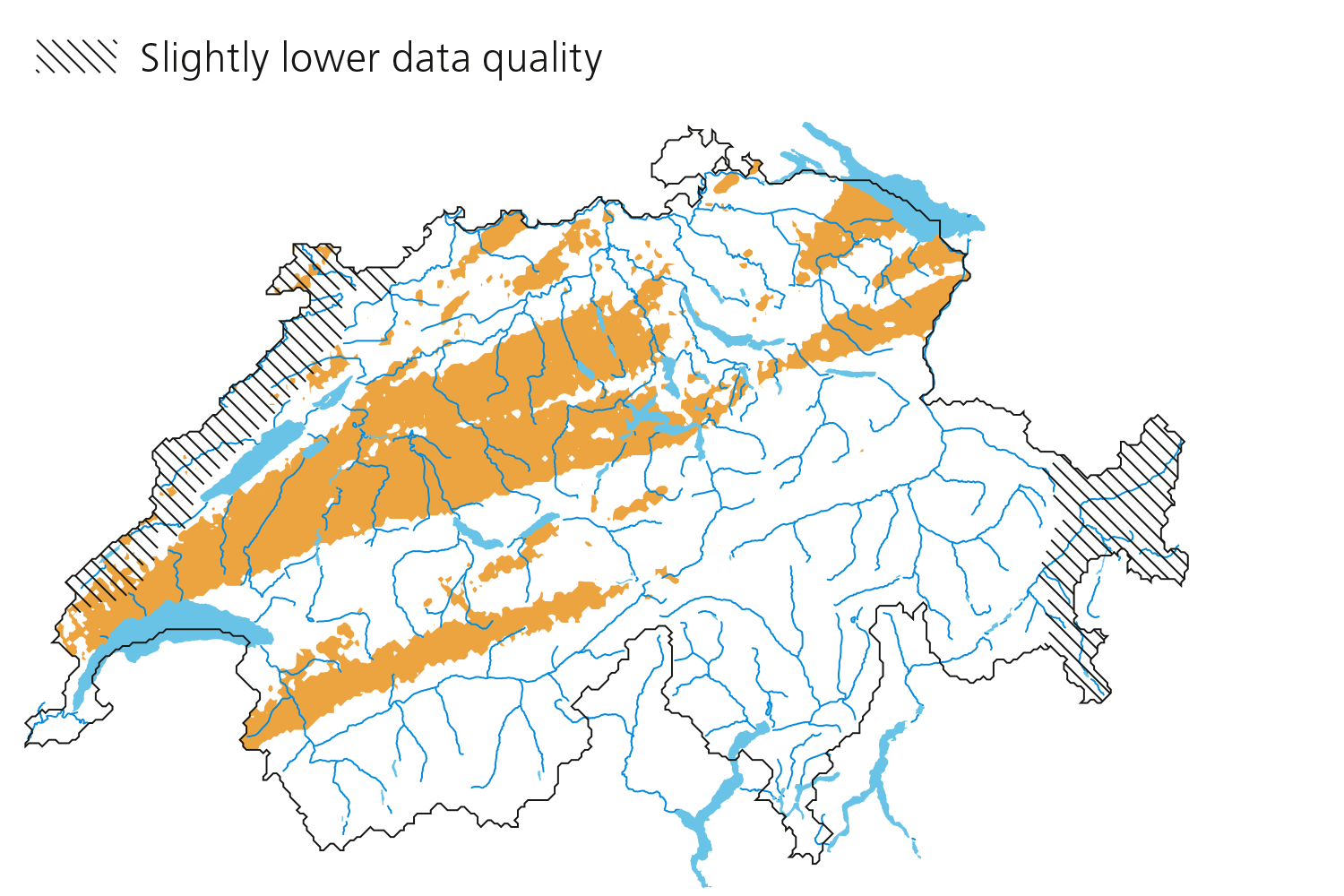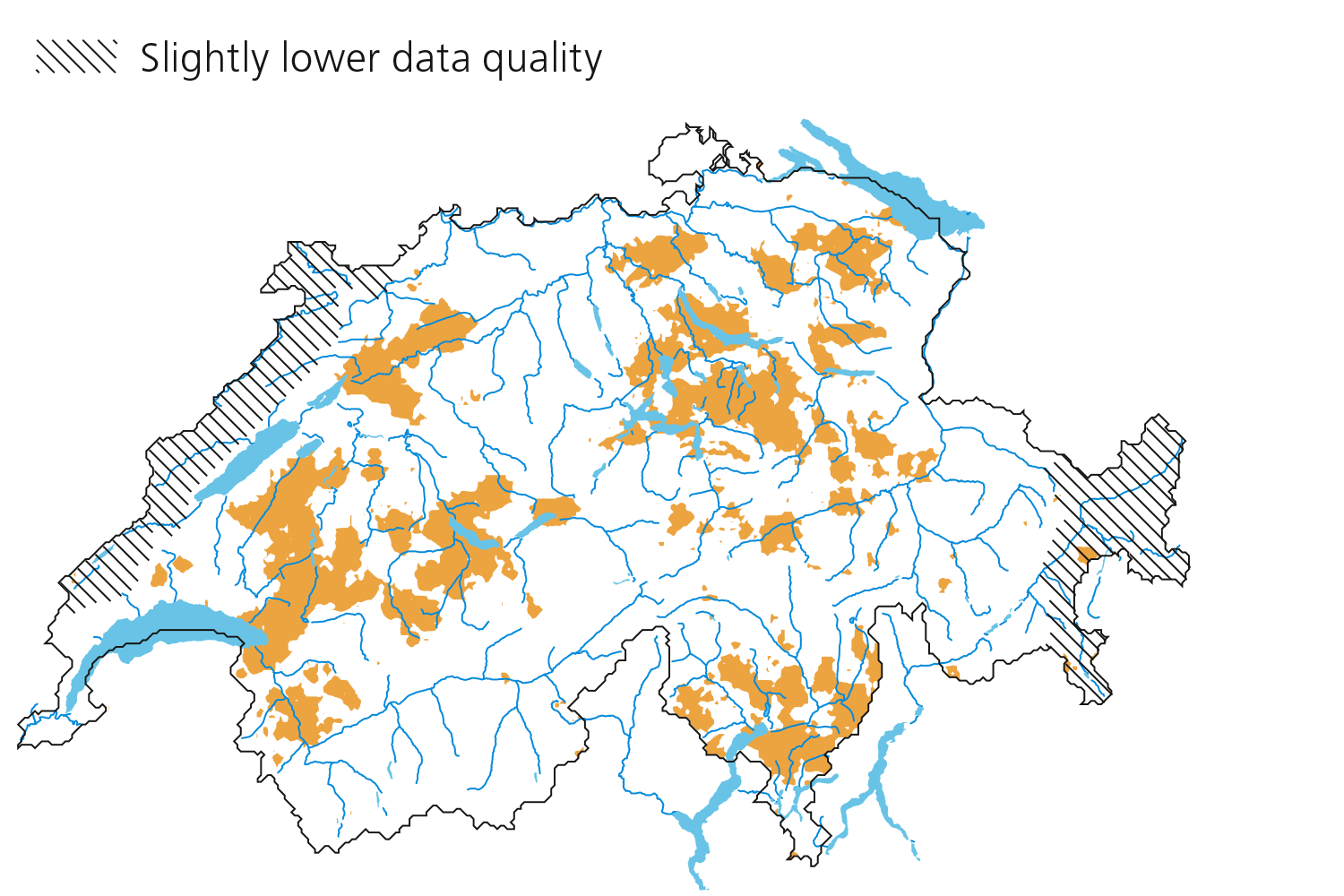In Switzerland, hailstones with a diameter of 2 cm or more must often be expected. Without risk-reducing measures, such hailstones can cause considerable damage to a vehicle fleet. The greater the size of the hailstones, the greater the extent of the damage; however, the bigger the hailstones, the less often they occur.

Where do we find “Einfränkler”?
A hailstone with a diameter of 2 cm corresponds roughly to the size of an “Einfränkler”, or a 1-Franc Swiss coin. How often such hailstones occur depends on the region under consideration. In the Emmental, for example, hailstones of diameter of 2 cm or more are observed on an average of up to two days per year. In the canton of Grisons, in contrast, hailstones the size of a “Einfränkler” are less common.
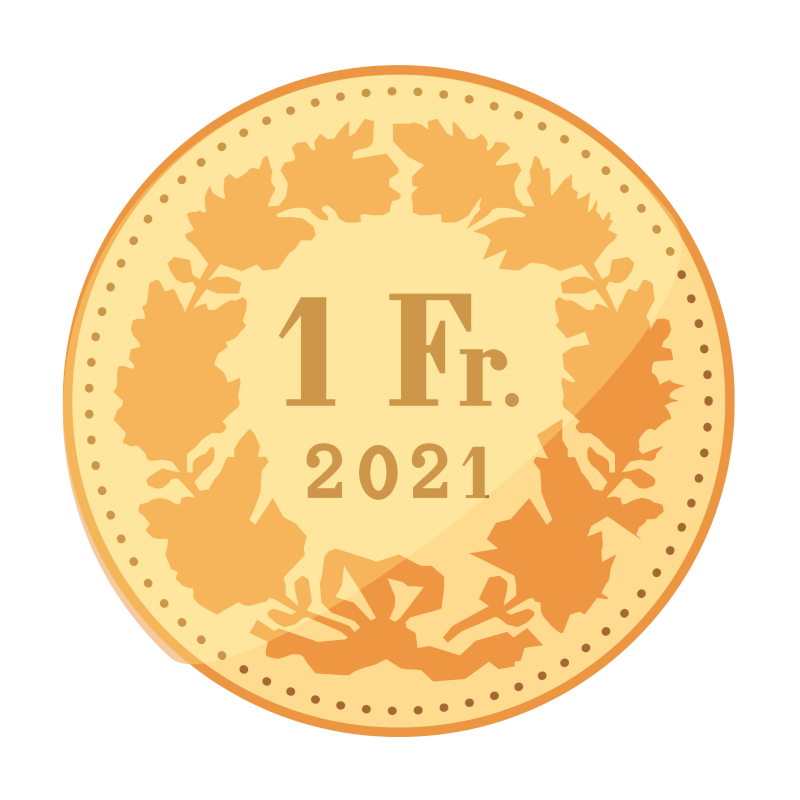
2 cm
Hailstones of 2 cm or larger in diameter
Which is more common: “Einfränkler” or golf balls?
In Switzerland, a hail event with hailstones at least the size of a 1-Franc coin can be expected around 32 times* per year on average, whereas events with hailstones the size of a golf ball are expected around 29 times* per year. However, this frequency corresponds to the maximum expected hailstone size (MESHS) for an event, a size that only occurs sporadically and is therefore unlikely to be directly observed.
* This refers to days featuring hailstones of this size or greater and in which hail was observed across Switzerland over an area of at least 100 km2.

4 cm
Hailstones of 4 cm or larger in diameter
If you observe hail yourself, you can report the hailstone size via the MeteoSwiss-App and thereby help to further improve the data!
Record Events Impact Large Areas
Two of the largest hail events between 2002 and 2020 in terms of area occurred on 23 July 2009 and 1 July 2019. The areas affected were 10,000 km2 and 8,000 km2 in size, respectively, and the maximum hailstone sizes were 5 to 6 cm; in 2009 in particular, this event caused considerable damage to buildings across Switzerland, estimated at 261 million Swiss Francs.
According to historical sources, the largest hailstone ever found fell from the Swiss sky on 2 August 1927 – with a diameter of about 13 cm, the size of a fist!
Last modification 11.05.2021


